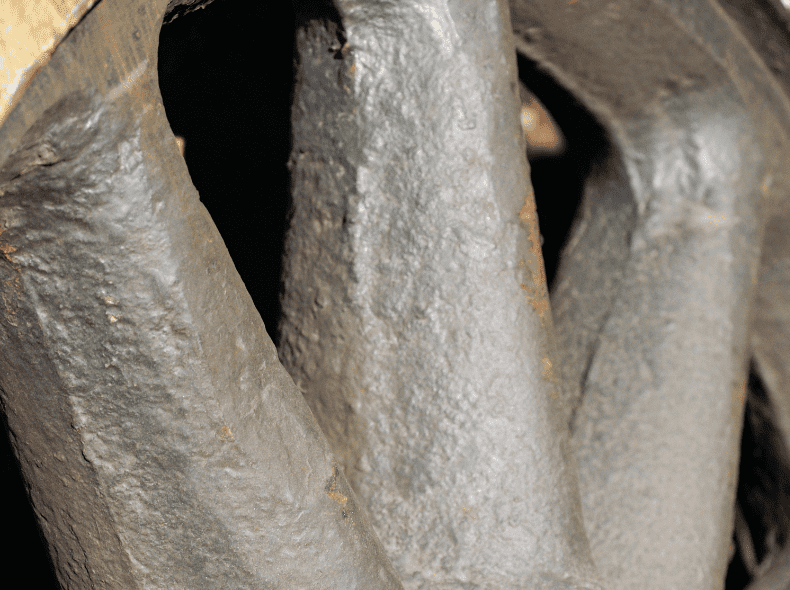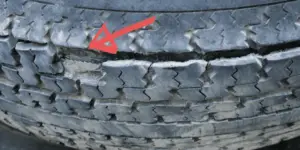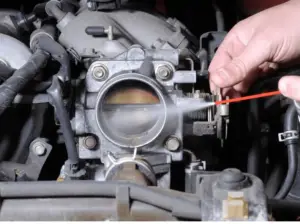A cracked rim won’t always leak air immediately. However, the crack will usually worsen over time, and a leak will happen eventually.
This article will explore how bad your rim crack is at the moment, so you will know the likelihood of it starting to leak sooner rather than later.
A crack on a spoke rather than the rim body is less likely to leak air as this part of the rim doesn’t come into direct contact with the tire. A crack here, though, will cause the rim to become unstable and alter the exact circular shape of the rim, indirectly causing a leak.
How to Stop a Cracked Rim From Leaking Air, Can It Be Repaired?
Weld the Rim
The only way to repair a cracked rim is to have it to weld it. It would be best if you chose a competent welder to do this.
Don’t be tempted to choose on price alone, as even a weld that looks good on the surface may have been done incorrectly and still be prone to failure.
A good welder will normally drill the crack at both ends and then cut grooves to ensure the weld takes.
Look around online for reviews and ensure that the car shop has guarantees and liability insurance. This will give you added peace of mind that they know what they’re doing. Look to pay between $150 to $200 for an effective weld.
A competent professional welder will also be honest with their assessment. Not all rim cracks can be welded, and a professional would rather not put his reputation on the line than make a quick buck.
Sometimes it’s cheaper and quicker to buy a new rim than to repair the cracked one. If the rim has been discontinued, it can be difficult finding a quality used replacement, though.
What Cracks Can Be Welded?
A welder will consider the depth, location, length, and how many cracks there are before deciding whether they will weld the rim.
Generally, the depth of the crack is the main concern over the number of smaller cracks. Small hairline cracks are less of a concern than wider, longer, deeper ones, as these indicate that the rim isn’t salvageable and can’t be made as good as new.
Cracks on the body of the rim that aren’t in contact with the tire are less of a concern than those that hold the tire in place.
Sealant/Epoxy Putty
Never attempt to fix the cracks with sealant. It won’t work long-term and isn’t designed for rims.
What Other Damage Could A Cracked Rim Cause
It’s a false economy to continue to drive with a cracked rim because if it collapses and shatters, it will affect other parts. At speed, a shattered rim could throw metal parts into other areas of your car.
Brakes
If a rim shatters totally, it may cause the brakes on that wheel to be damaged beyond repair. The metal from the rim is likely to strike against the brake rotor, shattering it and also affecting the brake caliper and the pads it holds.
Even if the rim failing doesn’t cause damage, a cracked rim is likely to be slightly out of round, and this small misalignment will cause the brake caliper not to sit perfectly.
Suspension
A cracked rim will also put additional strain on the suspension of the corner where the rim is. Any misalignment may put that strut or shock to work harder to keep the car balanced and stable.
If the rim fails, the metal will likely hit the cv joints, bushings, and other suspension parts, resulting in a large repair bill.
How to Tell If a Rim Is Cracked
Remove The Tire
When you take the tire off, you will only get a true idea of how badly the rim is cracked.
There may be further hairline cracks on the inside that the tire was hiding from the outside.
Not all cracks are deep and go all the way through the rim.
Leaking Air
A rim with a deep crack may leak air, whereas hairline ones won’t. To test if a crack has gone all the way through the rim, spray some soapy water onto the crack.
If you see bubbles, the crack is deep. No bubbles, and it is likely to be shallower and more likely to be repairable.
Steering Wheel Vibration
A cracked rim is likely to be slightly out of round and unbalanced.
This misalignment will present itself as vibration; there are many different reasons for steering wheel vibration, but if you see cracks in your rim, that could be at least partly to blame.
Causes of Rim Cracking
Bad Corrosion
Old rims do become corroded. They don’t rust as steel wheels do. Instead, they lose the protective clearcoat they had when they left the factory, and then salt and other chemicals on the road start eating away at the aluminum alloy underneath.

Rims become pitted, and duller, and very old rims lose their structural integrity and crack.
Hit a Pothole or Curb
The most common reason for cracked rims is hitting a curb or pothole. Tires usually cushion the rim from impacts – as the sidewall flex to protect them.
On larger impacts, tires can fail to do this, and the rim takes some of the force. Rims need no flexibility as they need to support the car’s weight, and the impact energy can crack them.
Is It Dangerous To Drive With A Cracked Rim?
A cracked rim can cause significant danger to you and other road users.
The crack may look superficial, but often visible damage may be worse on the rim area you can’t see without taking the tire off.
Blowouts
Blowouts can occur unexpectedly when the rim is cracked. All it is to drive over a pothole, and the weakened rim can’t absorb the impact and collapses, causing the tire to decompress rapidly.

If driving at speed, the driver will struggle to control the car and may collide with oncoming traffic.
Vibrations
Steering wheel vibration is often a sign of a cracked rim, as even a small alteration to the balance of the rim will be sent up through the steering column and the steering rack.
Sometimes at higher speeds, the vibrations get better as lower speeds mean the rims turn slower, and each rotation is more noticeable.
It’s down to pure luck whether a rim collapses at high or low speeds and whether you are around other road users. It is extremely dangerous, and a cracked rim should be repaired or replaced as soon as possible.
Conclusion
So will a cracked rim hold air? If the crack is on the main body of the rim, it will leak. Maybe not right away, but it will happen.
A cracked rim should be repaired or replaced as soon as possible. If a rim fails, a massive tire decompression may occur that bows a hole in your tire and puts you and others at risk.
A blowout will not only mean you need a new tire and rim but is also likely to damage other car parts in the breaking and suspension system,



![Tire Pressure Light Blinking But Everything Fine - [SOLVED] TPMS-dash-warning](https://carzaza.com/wp-content/uploads/2023/12/TPMS-dash-warning-300x150.png)









